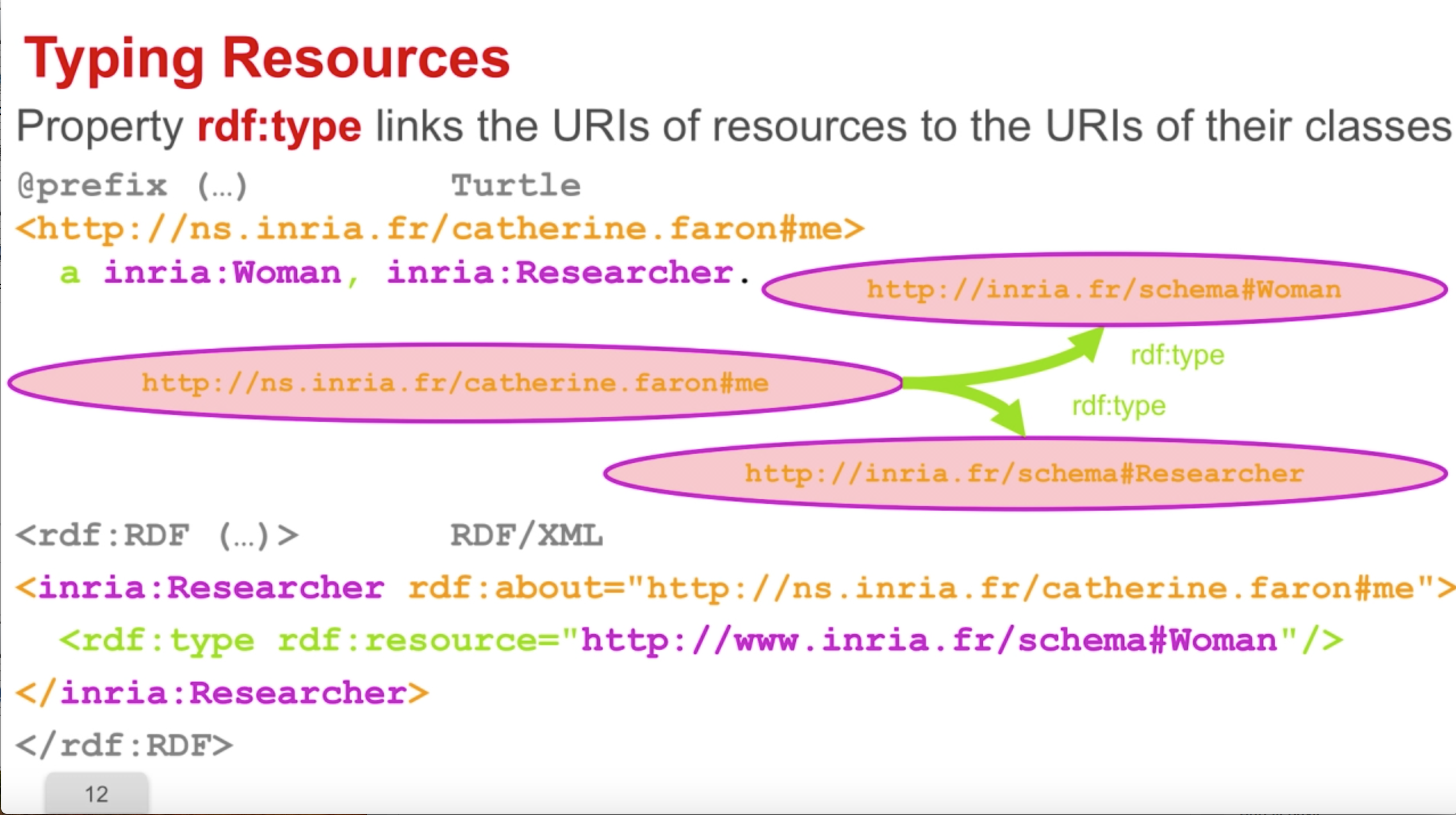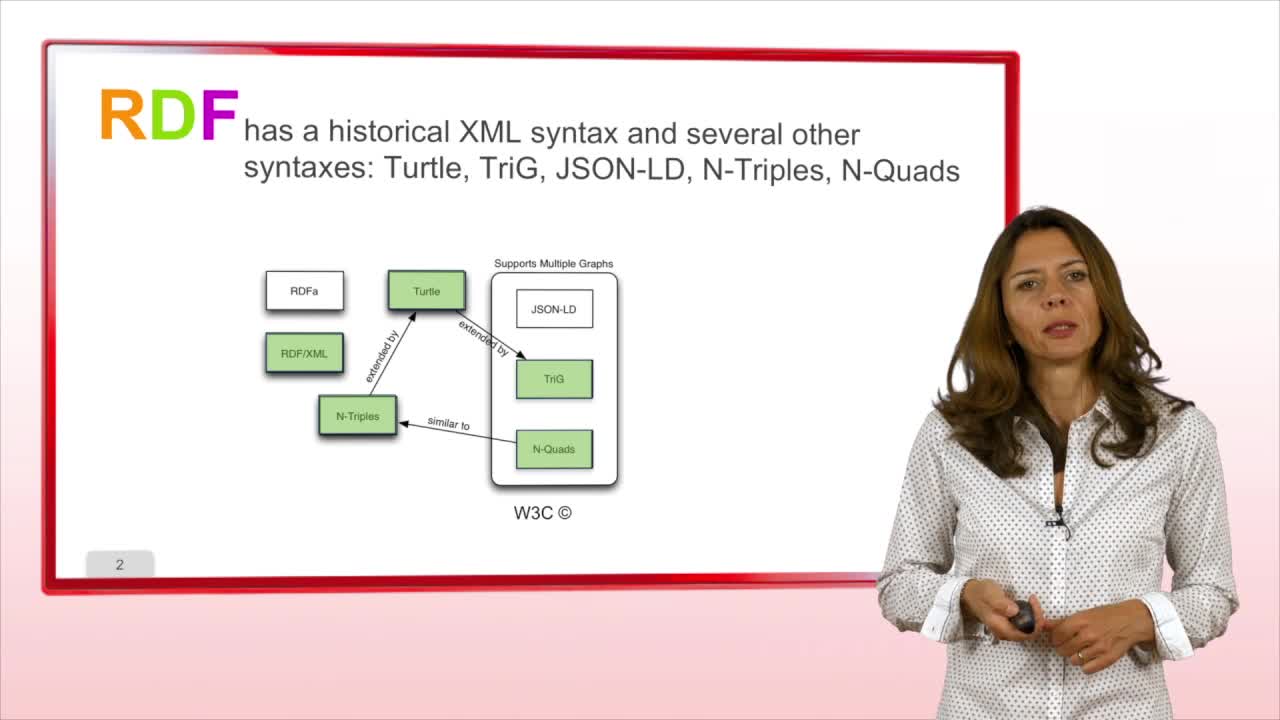2. The RDF Data Model

Descriptif
RDF is the first brick of the Semantic Web Standards Stack and comprises both a model and several serialization syntaxes, to publish data about anything on the Web. It enables anyone to describe resources, in particular Web resources, for instance indicating the author, the creation date, the title, the broadcasting rights of a film. RDF is for the Web of Data what HTML was for the documentary Web in its initial metaphor: the language in which one can describe, represent and link resources to be exchanged on the Web.
Table of Contents :
1. Describing resources
2. Triple Model and Graph Model
3. Serialization Syntaxes
4. Values, types and Languages
5. Groups
6. Naming Graphs
7. RDF Schema
Demos on RDF
Vidéos
Demos about The RDF Data Model
Validating and translating RDF data The W3C RDF validation service checks the validity of RDF statements in the RDF/XML syntax and, in the case where these statements are valid, it displays
7. RDF Schema
This sequence will introduce you to the RDF Schema, the standard to represent vocabularies to be used in RDF descriptions. In the
6.Naming graphs
This sequence explain how to name graphs in the RDF model and what is the utility of it. In many applications it is very useful to be
5. Representing groups
This sequence is about the specificities of the RDF model for representing groups. The type Bag is predefined in the RDF model to represent
4. Values, Types and Languages
This sequence is about the specificities of the RDF model related to typing literal values and resources in an RDF graph and indicating the
3. Serialization Syntaxes
We saw in the previous sequence the principles of the RDF model by using an abstract syntax. This sequence will present you the
2. A Triple Model and a Graph Model
This sequence will introduce the principles of the RDF model. We will see that it is a triple model and a graph model. RDF stands for
1. Describing resources
In this second part we will focus on RDF. RDF is the first brick of the Semantic Web Standards Stack and comprises both a model and several serialization syntaxes, to publish data about anything on
Intervenants et intervenantes
Auteur d'une thèse en Informatique à Nice en 1988
Professeure en poste à Université Côte d'Azur (en 2022)
Maîtresse de conférences en poste à l'Université de Nice-Sophia Antipolis (en 2020)
Autrice d'une thèse en sciences appliquées soutenue à Paris 6 en 1997
Professeur des Universités Université de Côte d'Azur
Rapporteure lors d'une thèse soutenue à l'INSA Lyon en 2024
Présidente du jury d'une thèse en Informatique à Université Côte d'Azur en 2024
Chercheur à l'INRIA de Sophia-Antipolis, FR (en 2016). Directeur de recherche à l'INRIA Sophia Antipolis-Méditerranée, Université Côte d'Azur (en 2021)
Titulaire d'un doctorat en sciences (Informatique, Nice, 2002)












